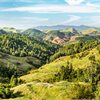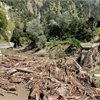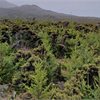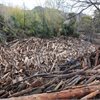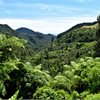Forestry consents and relaxed rules in erosion zones sow seeds of future disaster
13 Jun 2025
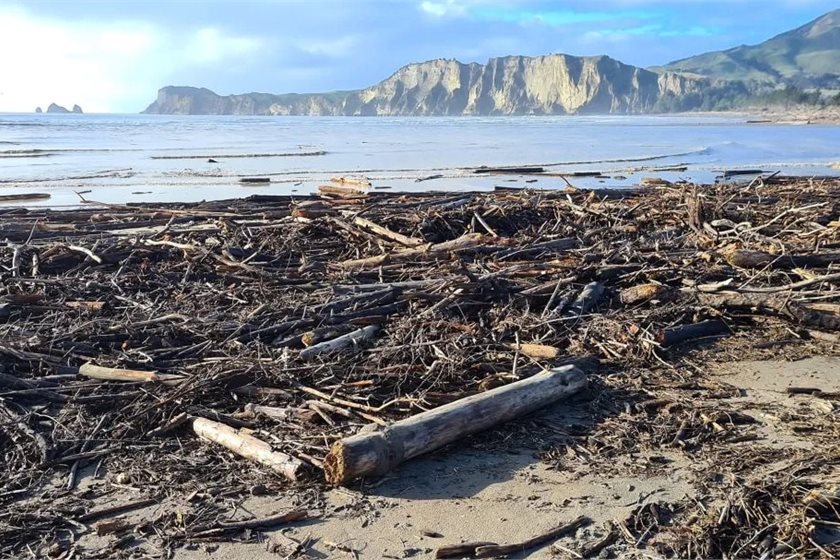
OPINION: The government’s move to restrict exotic forestry on our best food-growing soils will push even more forestry investment onto high erosion risk land on the East Coast, with the worst land becoming the only land left for the most intensive and destructive land use, writes Manu Caddie
The forests of Tairāwhiti are telling us something. Mangled culverts, fractured pipelines, collapsed hillsides—these are not random acts of Nature. They are the direct, predictable consequences of industrial-scale forestry on erosion-prone land. And despite a national outcry and damning Ministerial Inquiry two years ago, the system that allows this to happen remains not only intact, but on the verge of becoming even weaker.
Since the 2023 Ministerial Inquiry into Land Use (MILU) in Tairāwhiti and Wairoa, it has been clear that forestry activities—especially harvesting and replanting—in Red Zone areas and on Land Use Capability (LUC) Class 7 and 8 terrain pose a severe and ongoing risk to communities, infrastructure, and ecosystems. The Inquiry called for bold changes, including restricting forestry in high-risk zones and shifting to more resilient land uses. Yet, in 2024, a stream of new consents continued to greenlight forestry in some of the most vulnerable landscapes in Aotearoa.
Gisborne District Council consent reports for Forest Enterprises Growth Ltd (Waingake Road), Wharerata Forest Ltd (Paritu Station), Kerley Agriculture Ltd (Bruce Road), Fleetwood Forest, and others reveal a disturbing pattern. In each case, Council staff acknowledge the severe erosion risk—with multiple sites across dozens of consents classified as Erosion Susceptibility Class Red Zone or Land Use Capability 8e—and still approve consents for harvesting and afforestation. In one case, the land sits directly above the Gisborne water supply pipeline, which was broken in ten places during Cyclone Gabrielle. Staff even admit that another post-harvest slip “would not be palatable to the public” yet deem this likely scenario acceptable. The approvals are based on technical compliance, standard mitigation conditions, and future monitoring—not precaution, not transition.
The National Environmental Standards for Commercial Forestry (NES-CF) were meant to ensure a baseline level of environmental protection. But under current settings, they are enabling risk. Based on changes made in the wake of recommendations from the MILU report, the NES-CF now allows councils to impose stricter rules in high-risk areas, but the Government’s proposed changes would remove that ability. Councils will no longer be able to protect their regions with stronger local rules. Even worse, proposed changes to Rules 6 and 69 of the NES-CF would strip out the requirement to remove slash from risky harvest sites—despite slash being one of the most damaging legacies of cyclone events in Tairāwhiti and Hawke’s Bay.
Instead of heeding the Inquiry’s call to pull back forestry on unstable land, the Government has announced it will ban new exotic planting on LUC 1–5 land—our best food-growing soils and restrict it on LUC 6. While intended to protect prime farmland, this move will push even more forestry investment onto LUC 7 land—already mapped as high erosion risk across much of the East Coast. In other words, the worst land will now be the only land left for the most intensive and destructive land use. This is backwards policy.
If the Government removes council discretion, weakens slash removal requirements, and displaces forestry from moderate to severe erosion zones, it is baking future disaster into the landscape and effectively writing off a whole region, from both sustainable land use and in many parts future human habitation. It’s also setting up future ratepayers and taxpayers for tens of billions in repair bills over coming decades.
Councils, for their part, seem reluctant to lead. Even with the current NES-CF discretion, the evidence from these recent consent reports reveal decision-makers are consistently choosing to approve forestry on high-risk sites. The reports show that land with a history of slips, proximity to public infrastructure, and known erosion risks is described as "manageable" with optimistic compliance plans and setback buffers. But this is the same logic that gave us the walls of wood in Uawa, the log jams in Wairoa, the buried roads and bridges around Tokomaru Bay.
The reliance on consent conditions and post-activity monitoring sidesteps the central issue: some land, including a large proportion of Tairāwhiti, is simply not suitable for commercial forestry. It’s not a question of better erosion plans or smarter engineering. It’s a question of land use suitability. The Ministerial Inquiry made this clear. But that clarity has yet to penetrate the day-to-day decision-making of councils or central government.
If we are serious about building resilient regions, protecting catchments, and learning from the devastation of Cyclone Gabrielle, then commercial forestry cannot continue unchecked in the Red and Orange Zones. We need national leadership that honours the Inquiry's findings and the residents of the region. We need regional councils willing to say no—not just because they still have the power to, but because the whenua is telling us the cost is too high.
This moment is a test. Will we keep enabling a system that condemns rivers, roads, and lives? Or will we finally listen to what the land, and our communities, have been saying for years?
Manu Caddie is a co-founder of Mana Taiao Tairāwhiti, a group of Tairāwhiti residents that organised a petition in January 2023, prior to Cyclone Gabrielle, seeking Gisborne District Council support for stricter land use rules and an independent inquiry into land use practices in the region.
print this story

